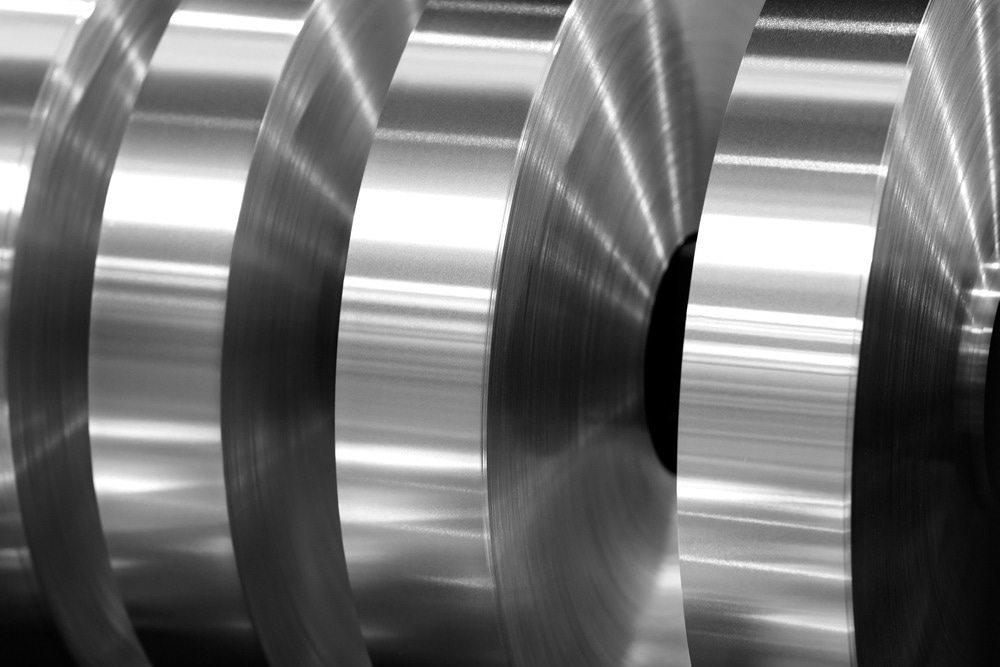A recent article published in npj Materials Degradation investigated the effect of microstructure and composition on localized corrosion susceptibility of three 6xxx aluminum alloys (AA6111, AA6451, and AA6016).

Image Credit: Pepe Baeza/Shutterstok.com
Background
Pure aluminum (Al) is generally considered corrosion-resistant due to the protective nature of the spontaneously forming aluminum oxide passive film. This film acts as a wide bandgap insulator and does not support strong electrochemical reactions.
To improve the mechanical properties of Al alloys, specific microstructures are developed. However, most Al alloys are susceptible to localized corrosion because of the intermetallic particles (IMPs) resulting from the alloying process.
6xxx series aluminum alloys (AA6xxx), mainly containing magnesium (Mg) and silicon (Si), are heat-treatable. They are known for their excellent specific strength, formability, and plasticity, making them suitable for infrastructure, automobile, and machinery applications.
Although AA6xxx generally exhibits good corrosion resistance, it is susceptible to localized corrosion in harsh environments. This present study aimed to understand the effects of microstructure and composition on the localized corrosion susceptibility of AA6111, AA6451, and AA6016 in aggressive chloride environments.
Methods
AA6111, AA6451, and AA6016 in the T4 temper (comprising solution heat treatment at 1050 ˚F, water quenching, and natural aging) were commercially procured as sheets of thicknesses 2, 0.9, and 0.9 mm, respectively. These sheets were subjected to a simulated paint bake (PB) treatment by heating at 180 °C for 20 minutes.
The composition and microstructure of the bulk alloys were investigated using optical microscopy (OM), X-Ray diffraction (XRD), scanning electron microscopy-energy dispersive X-Ray spectroscopy (SEM-EDS), and scanning transmission electron microscopy (STEM)-EDS. Their intergranular corrosion (IGC) susceptibility was assessed using an International Organization for Standardization (ISO)-specified method.
Immersion testing of bulk alloys was performed in 5 wt.% NaCl solution (pH 6.5) for 7 days. The extent of corrosion was studied using OM after 2 hours, 48 hours, and 7 days of exposure. Bulk analogs of the principal IMPs in AA6xxx, which are α (Al15(Fe,Mn)3Si2) and β (Al8Fe2Si), and the matrix phases were cast using compositions predicted by the Thermo-Calc™ thermodynamic calculations software (version 2023a) and SEM-EDS measurements.
Potentiodynamic polarization experiments were conducted on the Al alloy samples using either a syringe cell setup (for top surfaces) or a microcell capillary (electrode) setup (for fabricated bulk analogs). Three or four replicate measurements were performed on each sample type to determine the corrosion potential, pitting potential, limiting current density, galvanic potential, and galvanic current density.
The corrosion susceptibilities of the three alloys were further investigated by evaluating the electrochemical behavior of the component phases separately. The fabricated bulk analogs of α and β IMPs, as well as the three alloy matrix phases, were tested using macro/micro-cell testing.
Results and Discussion
The optical micrographs of the three alloys were similar, depicting some IMPs darker than others, likely due to their different compositions. SEM-EDS images of the AA6xxx surfaces showed comparable particle number densities.
XRD analysis revealed varying relative amounts of different IMPs in three AA6xxx. The IMPs were mostly α in AA6111, α, β, and Mg2Si in AA6451, and mostly β in AA6016. The STEM-EDS elemental mapping detected α, Mg2Si, and the elemental Si phases in AA6xxx but not the β phase.
During immersion testing in acidic and neutral environments, high Cu-containing AA6111-T4 + PB demonstrated the best corrosion performance, while low Cu-containing AA6016-T4 + PB exhibited the worst, undergoing severe pitting as well as slight IGC attack with increasing exposure time.
The standard interpretation of polarization curves suggested that AA6016's corrosion performance was superior to that of AA6111. However, this conclusion is opposite to the trend observed in the immersion tests.
The discrepancy in the relative behavior of the alloys during immersion and potentiodynamic polarization tests was attributed to the different influences of IMPs during the tests.
The potentiodynamic polarization curves of the as-cast of the three AA6xxx matrix analogs, cast α and β IMP analogs, and a Si wafer were recorded to comprehend their roles in the overall corrosion behavior of the bulk alloys. The intersections of the overlaid polarization curves reveal the possible interaction between the phases exposed simultaneously in an alloy microstructure.
Conclusion
AA6111 and AA6016 exhibited the best and worst overall corrosion performances, respectively, as indicated by the corrosion extent in exposure tests. However, this was not predicted by the standard interpretation of the alloys’ potentiodynamic polarization curves. These findings question the appropriateness of acidic chloride environments specified by ISO for assessing material suitability for automotive applications.
Accelerated testing is generally performed in more aggressive environments than expected service conditions, which becomes unsuitable if the failure mode is changed. Thus, the researchers propose a concentrated chloride environment, such as a 5 wt.% NaCl solution, to be more suitable for automotive materials selection. This can significantly influence the corrosion testing of many aluminum alloys.
Journal Reference
Adapala, P., et al. (2024). Understanding the effect of microstructure and composition on localized corrosion susceptibility of 6xxx aluminum alloys. npj Materials Degradation. doi.org/10.1038/s41529-024-00461-
Disclaimer: The views expressed here are those of the author expressed in their private capacity and do not necessarily represent the views of AZoM.com Limited T/A AZoNetwork the owner and operator of this website. This disclaimer forms part of the Terms and conditions of use of this website.